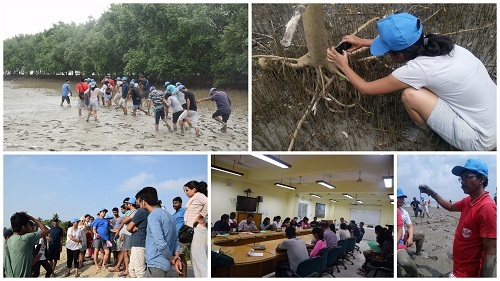SEES Field Trip to Sagar Island: Understanding environmental complexities through an interdisciplinary approach
March 30, 2017
The School of Ecology and Environment Studies at Nalanda University organised a four-day field trip from March 21-24, 2017 to Sagar Island, West Bengal.
Three faculty members from the School-Dr. Somnath Bandyopadhyay, Associate Professor; Dr. Sayan Bhattacharya, Assistant Professor and Dr. Bharath Sundaram, Assistant Professor-accompanied the students during the trip.
The aim of the trip was to get students to understand the various environmental complexities of Mangroves and other associated ecosystems by adopting a holistic and interdisciplinary approach. During the trip, the students looked into current environmental issues and potential environmental threats to the Island’s biodiversity and communities.

Students during field trip at Sagar Island
Pic Credit: Arijit Banerjee and Sonia Sharma
Sagar Island or Ganga Sagar is one of the largest islands in the Sundarban Biosphere reserve. It is an Island in the Ganges delta, lying on the continental shelf of Bay of Bengal. It lies at the mouth of the Hooghly River which separates it from the mainland to the east. Sagar Island represents almost the entire livelihood spectrum of the Sunderbans, thus it is considered a model island of Sunderban delta.
Students not only explored the ecological aspects of the ecosystem but also observed the complex knitting of society and environment in a remote and ecologically sensitive Island. Different topics explored by the students included development scenario, ecology and ecosystem services, and conservation trends in the area. The group visited various places like Bhagabatpur crocodile project, mud flats and sand flats and Fish bone channel aiding Nypa (Nypa fruticans) cultivation which is used for purposes like roof making by local communities.